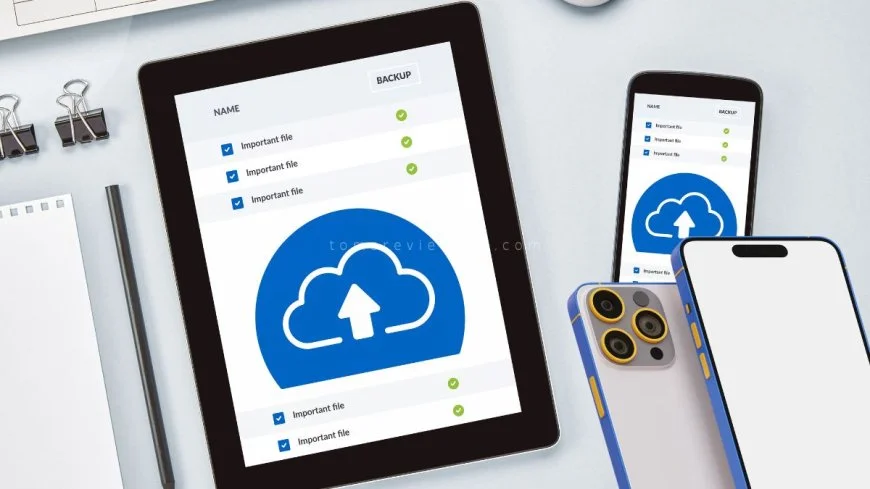Where Can I Find iPhone Backup: Mac & PC Locations
Discover the location of iPhone backups on your Mac or PC. Learn how to manage, delete, and copy backups easily. Find all the information you need here.

When it comes to locating your iPhone backup using iTunes, the process can either be a breeze or a headache. Knowing where to find this crucial data can mean the difference between losing precious information forever or restoring it effortlessly. In this guide, we'll explore the contrasting scenarios of easily accessing your iPhone backup versus struggling to locate it when you need it most using iTunes.
Key Takeaways
-
Locate iPhone backups: Understand where to find your iPhone backups on both your Mac and PC for easy access and management.
-
Utilize iCloud backup: Take advantage of iCloud backup services to securely store your iPhone data and ensure you have a reliable backup solution.
-
Manage backups effectively: Organize and maintain your backups on both Mac and PC to prevent data loss and streamline the backup process.
-
Regularly check backups: Make it a habit to monitor your backups to ensure they are up to date and include all essential data.
-
Backup before updates: Always create a backup of your iPhone before performing any software updates or major changes to avoid potential data loss.
-
Optimize storage: Consider deleting old backups or unnecessary data to free up space and optimize storage for future backups.
Understanding iPhone Backup
What is iPhone backup
iPhone backups are essential for safeguarding your data. Regular backups protect against data loss and ensure data security.
Importance of backups
Backups are crucial for protecting data from unforeseen events. They prevent data loss and ensure data security.
Types of backups
Different types of backups include local and cloud options. Full, incremental, and differential backups offer varied levels of data protection.
Locating iPhone Backups
On Mac or PC
When using a Mac, iPhone backups are stored in the Backup folder. Access this folder by going to ~/Library/Application Support/MobileSync/Backup/. On Windows, find the Backup folder at \Users(username)\AppData\Roaming\Apple Computer\MobileSync\Backup.
In iCloud
iCloud plays a crucial role in storing iPhone backups securely. View and manage your iCloud backups on iOS devices by navigating to Settings > [your name] > iCloud > Manage Storage > Backups. To manage iCloud backups on Mac or PC, use iCloud for Windows or access iCloud.com.
Using Finder or iTunes
Finder and iTunes are essential tools for saving iPhone backups on Mac. In Finder, click "Go" from the top menu, select "Go to Folder," then enter ~/Library/Application Support/MobileSync/Backup/. For Windows users, iTunes stores backups in \Users(username)\AppData\Roaming\Apple Computer\MobileSync\Backup. Both applications simplify backup management for iPhone users.
Finding Backups on Your Mac
Search backup folder
To locate iPhone backups on your Mac, search for the Backup folder. Knowing its location is crucial for managing backups efficiently. By finding this folder, you can easily access and restore your device data.
Use Finder for backups
Utilize Finder to manage your iPhone backups effectively. Finder offers various features that simplify backup management tasks. The advantages of using Finder include easy navigation and quick access to backup files.
Locate iTunes backups
To find iTunes backups on your computer, understand where iTunes stores these files. Accessing iTunes backups involves locating the specific folder where your device's backup data is saved. This process ensures you can retrieve important information when needed.
Finding Backups on Your PC
Search backup folder
To search for iPhone backups on your PC, navigate to the default backup location. Typically, backups are stored in a specific folder.
Locating the backup folder is crucial for accessing and managing your iPhone backups effectively. By knowing where to find them, you can ensure the security of your data.
Open iTunes backups
Learn how to open and access iTunes backups by launching iTunes on your PC. Within iTunes, navigate to the Preferences menu and select Devices.
Understanding the steps to view the contents of iTunes backups allows you to explore the data saved from your iPhone. This process enables you to review and extract specific information as needed.
Discover how to restore data from iTunes backups by connecting your iPhone to the PC and selecting the option to restore from a backup. This feature is handy when transferring data or recovering lost information.
Locate specific backup
Find out how to locate a specific backup within the Backup folder by checking the date and time stamp of each backup file. This helps in identifying which backup contains the desired information.
Learning the process of identifying and selecting a particular backup ensures that you can easily retrieve specific data without confusion. This method streamlines the retrieval process and saves time.
Understand how to distinguish between multiple backups by reviewing their details such as device name, date created, and size. This differentiation prevents mixing up different backups and ensures accurate restoration processes.
Managing Backups on Mac and PC
Delete backups
When it comes to managing your backups, it is essential to delete unwanted backups regularly. By doing this, you can free up valuable storage space on your computer. To delete backups safely without any data loss, follow these steps:
-
Go to the backup folder on your computer.
-
Identify the backups you no longer need.
-
Right-click on the backup files and select "Delete."
-
Confirm the deletion to remove the unwanted backups.
Understanding the importance of managing backups can help you maintain an organized system and prevent cluttering your storage with unnecessary files.
Copy backups
To ensure data safety, it's beneficial to make copies of your iPhone backups. Creating duplicate backups provides an extra layer of security in case one backup gets corrupted or lost. Follow these steps to copy your backups:
-
Locate the original backup files on your computer.
-
Select the files you want to copy.
-
Right-click and choose "Copy."
-
Paste the copied files into a different location for safekeeping.
By having multiple copies of your backups, you can safeguard your data against unexpected events like hardware failures or accidental deletions.
Change backup location
Changing the storage location of your backups can offer various benefits, such as improving organization and optimizing disk space usage. To relocate your backups to a new location, follow these steps:
-
Open the settings of your backup software.
-
Look for the option to change the backup location.
-
Select a new destination folder for storing your backups.
-
Confirm the changes to start saving future backups in the new location.
iCloud Backup Management
iCloud offers a convenient way to back up your iPhone data, ensuring that your information is safe and easily accessible. By utilizing iCloud backup management effectively, you can ensure that your device is always backed up and ready for any unforeseen circumstances.
Find iCloud Backups
Locating iCloud backups on different devices is simple. On an iPhone, go to Settings > [Your Name] > iCloud > Manage Storage > Backups. For Mac, open System Preferences > Apple ID > iCloud > Manage. On Windows PC, use iCloud for Windows app.
Accessing iCloud backups involves navigating to the same settings as finding them. Once you're in the Backups section, you can view all the devices linked to your iCloud account along with their respective backup sizes.
iCloud stores your device backups in a secure cloud environment, ensuring that even if something happens to your physical device, your data remains safe and accessible from anywhere with an internet connection.
Manage iCloud Storage
To manage iCloud storage for backups effectively, regularly review which apps and data are being backed up. Optimize storage by selecting specific apps or data to back up rather than everything on your device.
Optimizing iCloud storage usage is crucial to ensure that you have enough space for new backups and other important files. You can also purchase additional storage if needed through your Apple ID settings.
Efficiently managing iCloud backups helps in organizing your data, preventing unnecessary clutter, and ensuring that only essential information is stored securely in the cloud.
Delete iCloud Backups
Deleting unnecessary iCloud backups is essential to free up storage space for new backups and other files. To remove a backup, go to Settings > [Your Name] > iCloud > Manage Storage > Backups, select the backup, then tap Delete Backup.
Freeing up iCloud storage space involves identifying which backups are no longer needed and safely removing them from your account. This process ensures that you have ample space for future backups and other data.
Safely removing iCloud backups prevents accidental deletion of important data while keeping your storage organized and optimized for efficient use.
Advanced Tips
Copy backups to new location
Copying backups to a different storage spot is crucial for data safety. Duplicating backups adds an extra layer of security. It's wise to store backups in multiple places.
When relocating backups, ensure the process is done correctly. Create duplicates to safeguard information. Transfer backups regularly for updated versions and added protection.
-
Backup duplication enhances security
-
Storing in multiple locations safeguards against loss
Manage backup folders
Effectively managing backup folders ensures easy access and organization. Keep folders updated for quick retrieval. Regularly maintain and secure backup folders for optimal data protection.
Organizing backup folders aids in swift recovery during emergencies. Regular maintenance prevents data loss or corruption. Secure your backup folders with strong passwords and encryption.
-
Organize folders systematically
-
Update regularly for fresh data
Closing Thoughts
Understanding how to locate, manage, and optimize your iPhone backups is essential for safeguarding your valuable data. By knowing where to find your backups on both Mac and PC, as well as mastering iCloud backup management, you can ensure that your information remains secure and easily accessible. Implementing advanced tips will further enhance your backup strategies, providing you with peace of mind regarding the protection of your digital assets.
Take charge of your iPhone backups today by applying the techniques discussed in this guide. Regularly checking and organizing your backups will not only streamline your data management but also guarantee that you can swiftly recover any lost information. Remember, a proactive approach to backup maintenance is key to preserving your important files and memories.
Frequently Asked Questions
Where can I find iPhone backup files on my Mac?
You can locate iPhone backups on your Mac by going to ~/Library/Application Support/MobileSync/Backup/. This folder contains all your iPhone backups stored on your Mac.
How do I find iPhone backups on my PC?
To find iPhone backups on your PC, navigate to \Users(username)\AppData\Roaming\Apple Computer\MobileSync\Backup. Here you will find all the iPhone backup files stored on your PC.
How can I manage iPhone backups on my Mac and PC?
You can manage iPhone backups on both Mac and PC by using iTunes. Connect your iPhone, open iTunes, go to the device summary page, and select "Backups." From here, you can choose to create or delete backups as needed.
What is iCloud Backup Management for iPhones?
iCloud Backup Management allows you to back up your iPhone data to iCloud wirelessly. To enable this feature, go to Settings > [Your Name] > iCloud > iCloud Backup. You can manage your iCloud backups from this menu.
What are some advanced tips for managing iPhone backups?
-
Regularly check and update your backup settings.
-
Encrypt your backups for added security.
-
Delete old backups that are no longer needed.
-
Use third-party software for more advanced backup options.
-
Consider using cloud storage in addition to local backups.
What's Your Reaction?







































![MacBook Pro M5: All the features and specs you need to know [LEAKS REVEALED]](https://tomsreviewbox.com/uploads/images/202502/image_430x256_67bd6d7cd7562.jpg)



























